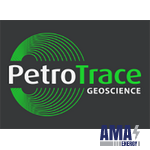Development Modeling and Integrated Modeling
Creation and adaptation of hydrodynamic models
The experience of PetroTrace experts, modern software and powerful hardware allow creating hydrodynamic models for deposits of all types, including oil rims and gas condensate deposits, deposits in fractured, carbonate and unconventional reservoirs, deposits of high viscosity oils and methane in coal seams, offshore fields with a limited amount wells and giants of Western Siberia with thousands of wells. We have experience adequately representing in hydrodynamic models most of the processes and technologies used in hydrocarbon production, from depletion to multilateral wells with hydraulic fracturing and cycling. It is critically important for the fields being developed to adjust the geological - hydrodynamic model according to the development history. We use both “manual” and automated adaptation methods, trying primarily to improve the quality of the model due to the “assimilation” of production data.
The use of hydrodynamic models in the operational management of development and monitoring
The history-adapted filtration model contains information on the current localization of residual moving reserves, and also describes the energy state of the formation. By analyzing the development of the field with the use of three-dimensional filtration models, we can draw up an effective program of geological and technological measures, identifying candidate wells for sidetracking, the possibility of hydraulic fracturing, spacing intervals, transferring wells to other objects and in the reservoir pressure, etc. Particular attention is always paid to measures to increase the efficiency of PDP and reduce unproductive injection. The developed GTM programs are calculated and optimized on three-dimensional hydrodynamic models in order to evaluate the economic efficiency of the measures and take into account their impact on the operation of surrounding wells.
As new production data arrives (usually once a month), three-dimensional hydrodynamic models are updated with an analysis of the effectiveness of the geological and technical measures. The model updated in this way is constantly operational and allows monitoring the development of the field, quickly identifying deviations from expected indicators.
Field Design and Reengineering
When designing the development of new fields, as well as changing design solutions for already developed deposits, three-dimensional hydrodynamic models allow multivariate calculations for various field development scenarios. We can choose the technology for stimulating the formation, justify the most efficient arrangement and configuration of production wells, design the optimal production pressure system. When designing and evaluating new fields in conditions of little exploration, it is critical to take into account the existing uncertainties and calculate not only the expected (most likely) version of the model , but also with the involvement of a representative ensemble of realizations, covering the entire range of possible options for the geological structure. This approach allows you to objectively assess and minimize the risks associated with geological (subsurface) uncertainty.
Integrated reservoir-well-surface models
In both design and operational management of development, it often turns out to be effective to consider not individual development objects, but the field as a whole, as a single asset, consisting of one or more productive formations, producing wells with deep pumping equipment, a product collection and preparation system, as well as pressure maintenance systems with injection wells. For this, integrated models are used that combine one or more filtration models with hydraulic models of wells and surface networks.
PetroTrace specialists have experience in creating, calibrating and using integrated models in both designed and existing fields. The technologies we use allow us to simultaneously ensure high accuracy of synchronization of hydraulic and hydrodynamic models and an acceptable time for calculations. Integrated modeling technology allows our customers to make optimal decisions aimed at maximizing the economic effect of asset development and eliminating the emergence of bottlenecks and the creation of redundant infrastructure. Integrated modeling technology is also a key component of the “Intelligent Field” solution, as it allows the implementation of an optimal production control cycle based on all the information received from sensors and flow meters of various types located in wells and on surface pipelines.

